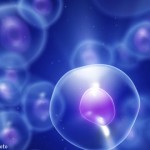“What we’re seeing is that exercise seems to be pushing this process toward just releasing nuclear DNA and not the mitochondrial DNA, and so it’s keeping those danger signals within the cells and not activating the immune system,” Dr. Rodrigues says. “It’s remarkable that [we have] evolved [so that exercise does] not over-activate the immune system or trigger things that would be bad for us.”
Instead, regular exercise may effectively hone the immune system’s ability to appropriately respond to pathogens.
As both groups of volunteers continued their exercise training, the study also found the release of anti-inflammatory IL-10 after exercise remained robust after weeks of exercising, while the release of pro-inflammatory IL-6 levels gradually weakened in a dose-dependent way.
“That suggests the anti-inflammatory signals are relatively stronger overall with continued exercise,” Dr. Rodrigues says. In particular, aerobic exercise, such as running, swimming and walking, is likely to have a bigger inflammation-dampening effect than resistance exercises like weightlifting.
Although all subjects in the study released cell-free DNA as they exercised vigorously, the levels varied enormously from person to person. Dr. Rodrigues says he’d love to probe any links between those levels and common genetic variants, with the suggestion that some people with autoimmune conditions might be better candidates than others for this kind of prescription exercise. “Their bodies might be more sensitive to some of these signals, whereas others might be less so,” he says.
Repeating the study in a larger group would be a good next step toward validating the results, Dr. Rodrigues adds. He’d also love to see more research aimed at identifying how exercise triggers the activation of neutrophils, macrophages and dendritic cells at the molecular level.
In the meantime, his results have significantly changed how he views exercise. “Every time I go up a flight of stairs, I’m always thinking about my macrophages and how they’re releasing less cell-free DNA over time, and how the overall process is helping make my body more anti-inflammatory and more fit, and reducing my risks for all sorts of diseases,” he says.
Bryn Nelson, PhD, is a medical journalist based in Seattle.
References
- Caggiano C, Celona B, Garton F, et al. Comprehensive cell type decomposition of circulating cell-free DNA with CelFiE. Nat Commun. 2021 May 11;12(1):2717.
- Rodrigues KB, Weng Z, Graham ZA, et al. Exercise intensity and training alter the innate immune cell type and chromosomal origins of circulating cell-free DNA in humans. Proc Natl Acad Sci U S A. 2025 Jan 21;122(3):e2406954122.

